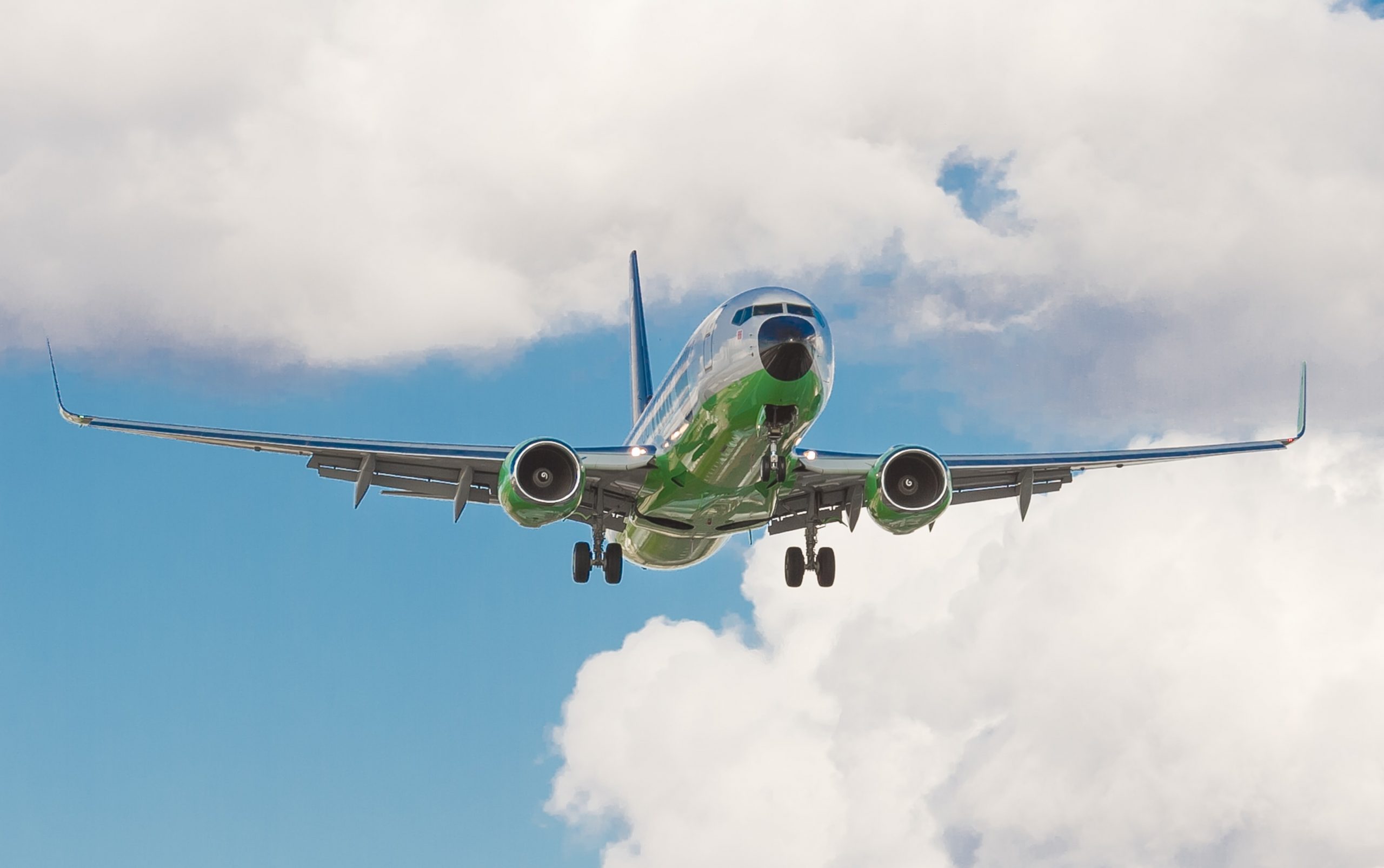




14 Nov 2025
The Lease Default Playbook: Managing Recovery and Redeployment Risk
In aircraft leasing, no one ever hopes to use the default playbook. Lessors spend months negotiating lease terms, aligning technical expectations, and building relationships with airline customers, all with the intention of a long, stable, predictable contract. But aviation is a cyclical business, and every cycle comes with financial stress, sudden downturns, and failures that no spreadsheet or risk model can fully anticipate. When an airline lessee defaults, everything depends on how quickly and effectively the lessor can move. And this is where the real test begins.
A lease default is never just about unpaid rent. It’s a chain reaction that triggers legal workstreams, operational decisions, logistical planning, technical inspections, cross-border coordination, and intense time pressure. Every hour an aircraft sits grounded, its value is at risk. Every missing maintenance record, every unapproved repair, and every unknown component history chips away at its marketability. The lessor must step in with a clear, structured, almost military-style plan: stabilise, recover, assess, repair, and redeploy.
That’s what the “Lease Default Playbook” really is not a legal document, but a survival guide. It covers the legal rights that allow a lessor to repossess an aircraft, the operational tactics for locating and securing assets, the technical realities of bringing a poorly maintained aircraft back to life, and the commercial strategy for placing that asset back in the market at the right time and value. And in a world where cross-border leasing is the norm, this playbook is more important than ever.
This blog breaks down that playbook in detail not as legalese or checklists, but as a real-world journey through what happens when a lessee stops paying and the lessor must protect the aircraft, protect asset value, and protect their portfolio.
What Really Happens When a Lessee Begins to Default?
Most defaults don’t come out of nowhere. They begin with subtle, early warning signs. A payment that arrives a few days late. A lessee asking to renegotiate terms. A sudden dip in utilisation. A maintenance event being pushed out without a clear reason. For lessors, these moments matter. They’re tiny indicators that something deeper may be happening within the airline’s financial structure.
When an airline starts defaulting whether by missing payments, breaching maintenance covenants, or violating operational terms the lessor’s risk profile changes instantly. The aircraft is still flying, accumulating cycles, and depreciating physically and technically. The records may not be updated on time. Spare parts may be swapped between aircraft. Engines might be undergoing repair in different countries. And because aircraft operate internationally, legal boundaries complicate everything.
The lessor’s first task is not to act, but to confirm. They need to determine whether this is a temporary liquidity issue or a structural collapse. Some airlines recover after short-term setbacks. Others never come back. Understanding which scenario is unfolding shapes every decision that follows, especially how quickly the lessor should trigger formal default procedures.
This early stage is sensitive. Moving too slowly risks asset value. Moving too fast can damage relationships or trigger legal restrictions. That balance is why the default playbook exists: it standardises decisions so the lessor never acts out of panic, only through calculated strategy.
How Legal and Contractual Tools Anchor the Entire Recovery Effort?
The legal phase is where the playbook begins. Aircraft are mobile assets that can cross borders, operate in multiple jurisdictions, and sit under the protection of different aviation, insolvency, and commercial laws. Without strong legal foundations, repossession can drag on for months or become impossible.
The first step is a formal notice of default. The lessor issues a written notice outlining exactly which lease terms have been violated. This isn’t just paperwork; it creates a legal timestamp that will matter for everything that follows, including claims for unpaid rent, repossession rights, and damages. The lessee is typically given a cure period and a final chance to fix the problem. If they don’t, the lease can be terminated.
From here, things get complicated. Repossession rights depend heavily on where the aircraft is registered and where it is physically located. Some countries fully support lessor rights and allow quick enforcement. Others require lengthy court procedures. And some jurisdictions especially those outside the Cape Town Convention can create months of delays or restrict repossession during insolvency.
This is why the Irrevocable Deregistration and Export Request Authorisation (IDERA) is one of the most powerful tools in international leasing. If a country is a Cape Town signatory, a lessor holding IDERA can request deregistration and export directly from the aviation authority, bypassing lengthy legal battles. It simplifies, accelerates, and de-risks the recovery process.
But not all airlines operate in IDERA-friendly jurisdictions. And when insolvency enters the picture, local bankruptcy laws often freeze asset repossession. Some jurisdictions protect creditors strongly; others favour airlines and impose moratoriums.
In real-world leasing, default management isn’t just legal work, it's legal strategy. A lessor must choose the right jurisdiction to file claims, engage local counsel early, understand the lessee’s corporate structure, and be ready with multiple legal paths. The goal is always the same: secure the right to recover the aircraft before its condition deteriorates.
Why Locating and Securing the Aircraft Is a Race Against Time?
Once legal rights are established, the operational battle begins. An aircraft may be sitting at a well-maintained hub airport, or it could be stranded at a remote outstation with minimal oversight. Some distressed airlines intentionally move aircraft to locations unfriendly to lessors. Others cannibalise parts or keep flying the aircraft until the last possible moment.
The first task is locating the aircraft. In most cases, fleet tracking systems and flight data platforms make this straightforward. But in a hostile default, the lessee might stop sharing flight schedules or turn off transponders. Lessors rely on recovery agents, local contacts, MRO networks, and sometimes even airport staff to pinpoint the aircraft.
Once located, the asset must be secured. This usually means hiring professional security teams or ground agents to ensure the aircraft cannot be flown away. The engines with the highest-value components require special attention. Recovery teams must inspect serial numbers, confirm the engines match the lease, and check whether they have been swapped or are undergoing maintenance elsewhere.
At the same time, maintenance records must be secured immediately. Without complete records, the aircraft’s value drops dramatically. A missing logbook can reduce resale value by millions. Lessors often treat record retrieval as the single most urgent task in the entire recovery playbook.
This stage is where coordination peaks: lawyers, recovery agents, airport authorities, insurers, and technical experts all work in parallel. The lessor’s objective is clear: stop further deterioration of value and stabilise the asset.
Why Maintenance Records Are the Lifeblood of Value?
In leasing, an aircraft is never valued purely by its physical condition. Paperwork or its verified digital equivalent carries just as much weight. Every component, every repair, every inspection, every replacement is documented. Without these records, an aircraft becomes a technical and financial risk.
This is why securing records is one of the first actions in the playbook. In a friendly recovery, an airline cooperates and hands over everything. In a hostile scenario, records might be incomplete, out of date, locked behind unpaid MRO invoices, or stored across multiple facilities.
Lessors must act fast because missing records can delay deregistration, complicate airworthiness approval, and drastically slow the aircraft’s return to service. An aircraft that should take two weeks to remarket can sit idle for months.
That delay translates directly into lost revenue making record preservation central to value preservation.
How Technical Inspections Reveal the Real Cost of Redeployment?
Once the aircraft is secured, the lessor conducts detailed technical inspections. This is not a quick walkaround. Engineers examine every system, check component serial numbers, verify modification status, review AD and SB compliance, and assess whether the aircraft meets redelivery conditions.
A defaulting lessee rarely returns the aircraft in compliant condition. Some common issues include:
- overdue maintenance
- unauthorised repairs
- swapped components
- missing cabin equipment
- deferred defects
- engines stuck in MRO shops
Each issue translates into cost. A single engine shop visit can cost millions. A heavy C-check can take weeks. And if the aircraft has been misused or poorly maintained, the lessor must decide whether to repair, part-out, or long-term store it.
This is where technical judgment shapes the commercial outcome. Investing too much may never be recovered. Investing too little may leave the aircraft unmarketable. The lessor’s technical teams must balance cost, timing, market demand, and long-term asset value, a delicate equation that becomes even more complex when multiple aircraft are involved.
Why Repossession Costs Can Spiral Without Careful Planning?
Default management is expensive. Lessors pay legal fees, storage fees, ferry flight costs, crew travel, insurance extensions, and MRO charges. In difficult recoveries, costs can rise dramatically.
This is why the playbook emphasises early financial planning. The lessor must estimate repossession costs, potential recovery of unpaid rent, expected downtime, and the investment required to bring the aircraft back to marketable condition.
For some aircraft types, especially older ones, repossession might cost more than the aircraft is worth. In those cases, part-out or sale-of-engines may be the smarter option.
This highlights the importance of scenario planning long before a default occurs.
How Lessors Prepare the Aircraft for Its Second Life?
Once inspections are complete and costs are understood, the redeployment phase begins. This is where the aircraft transitions from a recovered asset to a market-ready product.
The first task is scheduling necessary maintenance. This could mean engine overhauls, cabin refurbishments, structural inspections, or component replacements. The lessor works closely with MRO partners to minimise downtime. Every day on the ground reduces revenue potential.
Next, the lessor prepares the aircraft for remarketing. They evaluate global demand across regions, assess which airlines need capacity, and position the aircraft in a location optimal for viewings and ferrying. If the aircraft suits the freighter market, conversion may be considered.
The redeployment stage is equal parts technical and commercial. It requires understanding market cycles, lease rate trends, airline credit quality, and fleet needs. The lessor must decide whether to lease short-term to generate quick revenue or pursue a long-term lease to lock in stability.
This decision shapes the financial recovery from the default.
How Market Conditions Influence the Redeployment Strategy?
A repossessed aircraft enters the market at whatever moment the industry is experiencing. If demand is high as seen during post-pandemic recovery the aircraft may be placed quickly at attractive lease rates. If demand is weak, the lessor must be more strategic.
During oil price surges, for example, fuel-efficient aircraft are in high demand, while older types can sit idle. During engine shortages, even mid-life aircraft may attract strong interest. If air cargo is booming, conversions become attractive. If airline bankruptcies rise, competition among lessors increases.
This is why redeployment isn’t just an operational step, it is a portfolio-level strategy. A single redeployment decision affects long-term revenue, residual value, and the lessor’s overall fleet balance.
Why Communication and Coordination Determine Success?
Behind every repossession is an army of specialists: lawyers, engineers, leasing teams, recovery agents, financiers, insurers, and airport personnel. The lessor must coordinate all of them seamlessly.
A breakdown in communication can delay recovery, lose records, or compromise asset conditions. That’s why leading lessors invest heavily in centralized systems that track every document, inspection, legal filing, and technical update in real time.
The default playbook is only as strong as the coordination that supports it.
Why a Strong Default Playbook Protects Long-Term Asset Value?
Assets are the foundation of a leasing company. Preserving their value even in stressful situations like lessee defaults is the heart of risk management. A well-prepared playbook helps a lessor:
- act quickly
- reduce downtime
- control costs
- preserve airworthiness
- protect long-term value
- maintain investor confidence
- stabilise portfolio returns
Defaults will always be part of the aviation business. What separates strong lessors from vulnerable ones isn’t how many defaults they face but how effectively they respond.
At Acumen Aviation, we understand that every aircraft recovery, every default scenario, and every redeployment decision is a high-stakes moment.
Our technical teams, records specialists, legal partners, and asset managers work with lessors around the world to protect value, accelerate recovery timelines, and bring aircraft back to revenue service faster.
If your portfolio is exposed to operator distress — or you want to strengthen your default playbook before the next market shock — our experts are here to help.
Reach out to Acumen Aviation to strengthen your asset strategy, improve repossession readiness, and navigate complex redeployments with confidence.
FAQs
1. What triggers a lease default?
Most defaults happen because of missed payments, financial distress, or a breach of operational or maintenance obligations.
2. How fast can a lessor repossess an aircraft?
Anywhere from days to months depending on jurisdiction, airline cooperation, and whether Cape Town protections apply.
3. Why are maintenance records critical during recovery?
Missing or incomplete records instantly reduce aircraft value and can block redeployment.
4. What costs should a lessor expect after default?
Legal fees, repossession logistics, storage, inspections, and often significant maintenance to restore airworthiness.
5. How soon can a recovered aircraft be leased again?
Timing depends on market demand and aircraft condition; anything from a few weeks to several months.





